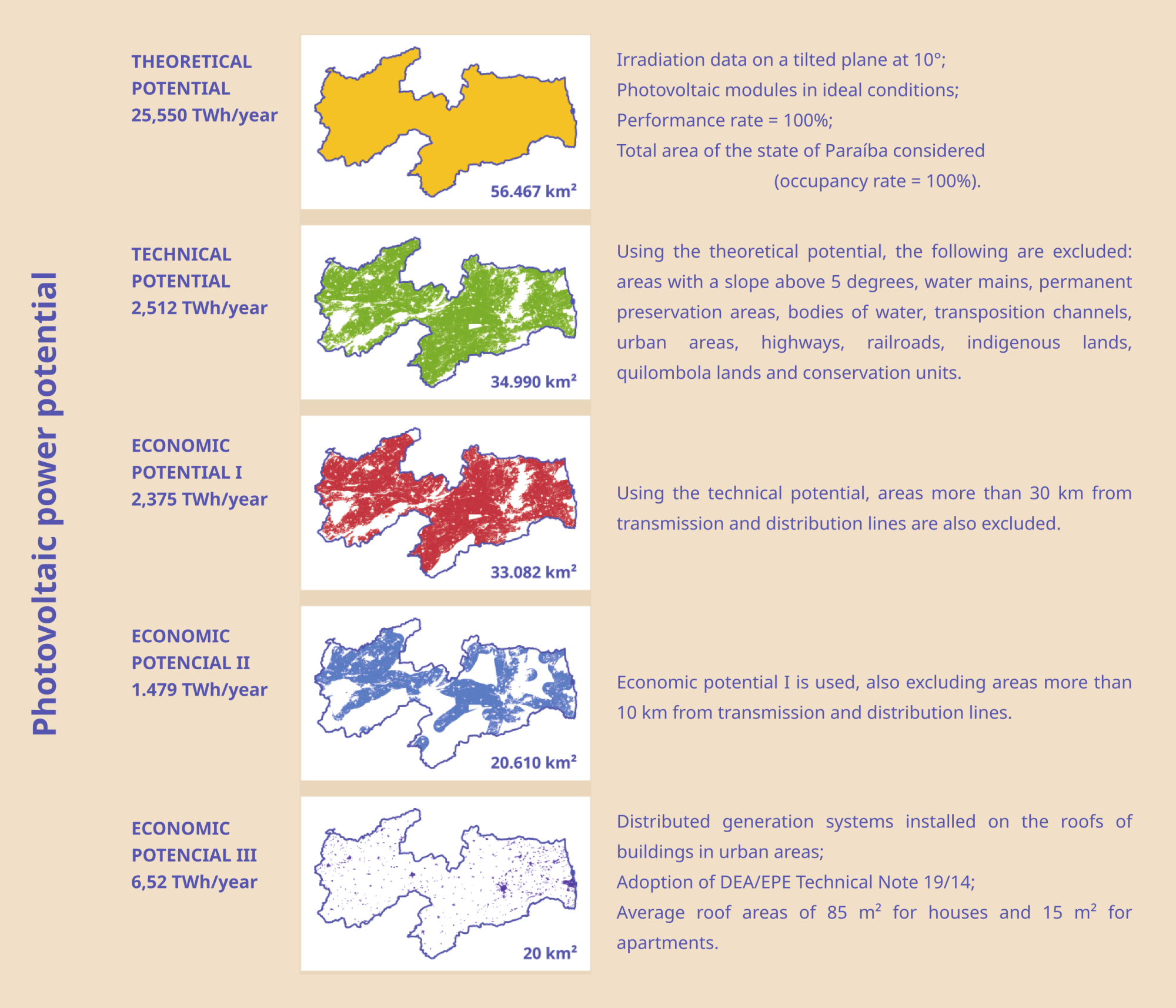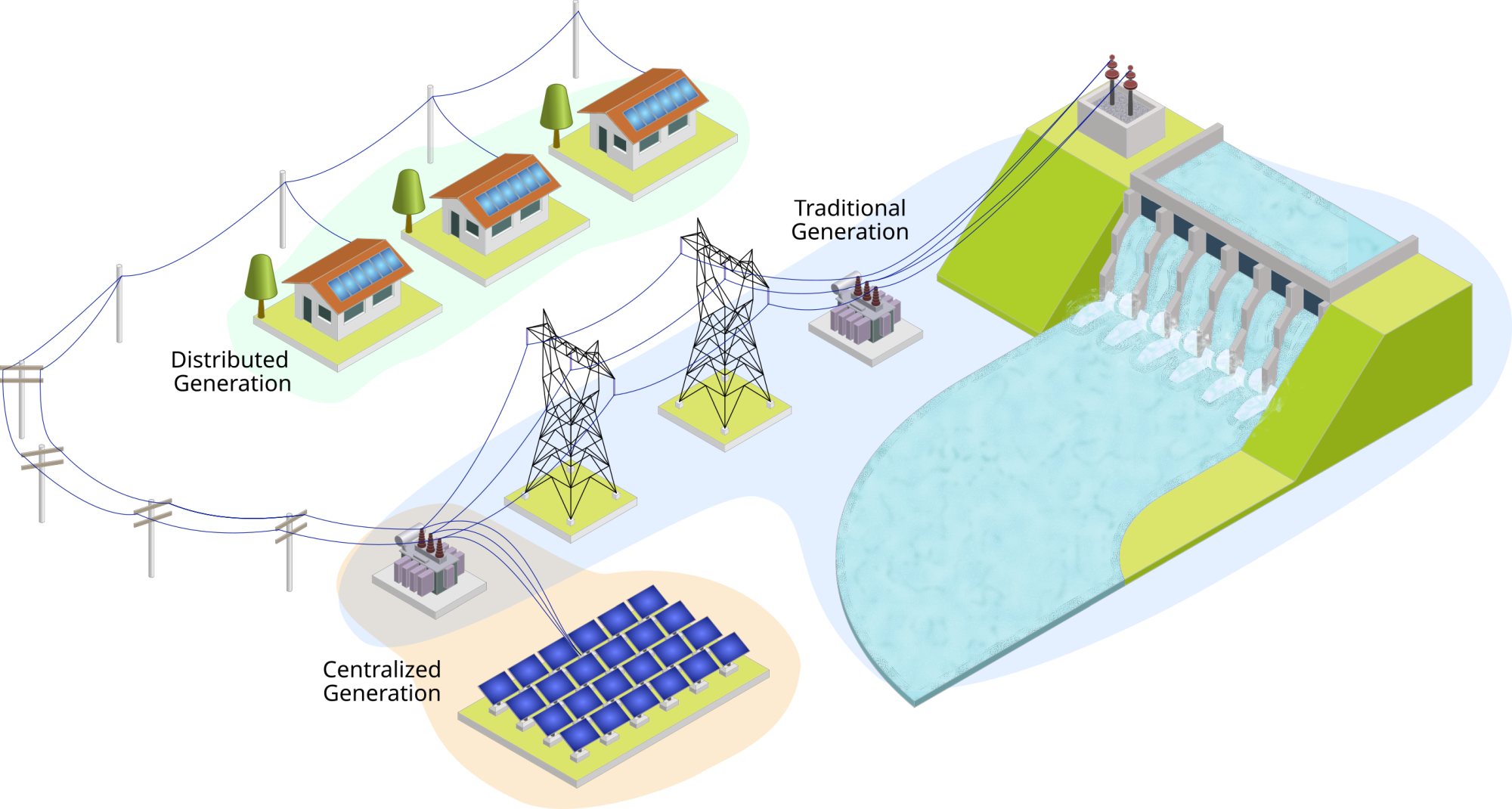
In this topic, an analysis of the potential application of photovoltaic solar energy systems in the state of Paraíba is presented.
Theoretical potential is understood as the available potential for photovoltaic solar generation, assuming that the modules would be installed in ideal conditions for photovoltaic generation, i.e., modules oriented to geographic north with an inclination of 10° relative to the horizontal plane and without shading.
The calculation of the theoretical potential used the Global Irradiation database on the 10° Inclined Plane (GTI₁₀), assuming the use of the entire area of the state of Paraíba for solar generation – with an occupancy rate of 100%. For this analysis, none of spatial restriction was assumed; therefore, protected and flooded areas were not excluded in this calculation.
Optical and electrical losses in energy generation and transmission were also not considered, as technological development and improvement are projected into the future. This premise is equivalent to assuming a Performance Rate of the photovoltaic system equal to 100%.
In addition to the assumptions described above, the calculation assumed:
Once these assumptions were established, the theoretical potential obtained is approximately 12 TWp, generating around 70 TWh/day or 25,550 TWh/year. To illustrate, an area with only 0.02% of the State of Paraíba would be enough, in theory, to generate an amount of electricity equivalent to the energy consumption of the entire state in 2021, which was 5,881 GWh.
As in determining the theoretical potential, the evaluation of the technical potential of photovoltaic generation assumes the ideal conditions for power generation: modules oriented to the geographical north with an inclination of 10° in relation to the horizontal plane and without shading. In addition, the following assumptions are assumed:
Considering these assumptions, the technical potential was determined at approximately 1.54 TWp, capable of generating around 6.88 TWh/day or 2,512 TWh/year.
This economic scenario for photovoltaic energy potential assumes, as a starting point, the previously determined technical potential, adding a restriction for the distance between the place of interest for generation and the next point of connection to the National Interconnected System (SIN):
Thus, the result obtained for economic potential I is approximately 1.46 TWp, capable of generating around 6.51 TWh/day or 2,375 TWh/year.
The second scenario of economic potential has as assumptions those considered in the previous scenarios, plus the following restriction:
Thus, economic potential II results in approximately 907 GWp, generating around 4.05 TWh/day or 1,479 TWh/year. To get an idea of this economic potential, just 0.14% of the state's area would be enough to generate an amount of electricity equal to the consumption recorded in 2021 by Paraíba, about 5,881 GWh.
The third scenario adopted for the economic potential of solar resources in the state of Paraíba aims to evaluate the use of solar energy in distributed generation systems installed on the roofs of buildings in urban areas. To this end, the following assumptions were adopted:
Considering these assumptions, the economic potential III is estimated at approximately 4.16 GWp, capable of generating around 17.87 GWh/day or 6.52 TWh/year, that is, greater than the electricity demand of the state, being possible to export the surplus to the National Interconnected System (SIN).

Click on the image to enlarge
Figure 5.1 presents the concept of distributed generation.

Click on the image to enlarge
Figure 5.1 - Photovoltaic installations in homes, industries, buildings, and rural areas.